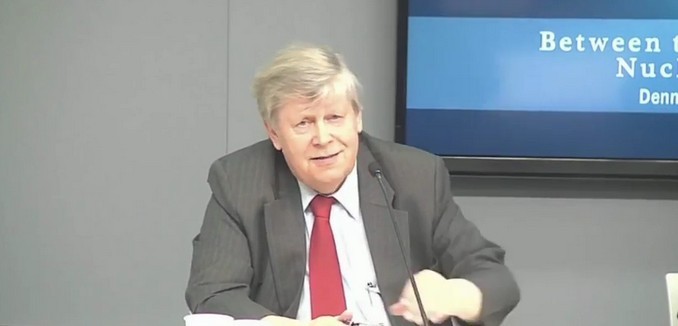The concessions built into the deal currently taking shape between the P5+1 and Iran in Lausanne, Switzerland may be so extensive as to undermine the possibility of long-term monitoring, and fail to stretch Iran’s breakout time to a year, according to former International Atomic Energy Agency (IAEA) deputy director Olli Heinonen.
Speaking to reporters on a Tuesday conference call hosted by The Israel Project, Heinonen stressed that the Obama administration’s concession on Iranian full disclosure, reported by The Wall Street Journal last Wednesday (Google link), will badly undermine the possibility of a future monitoring program:
[Y]ou need to have a good baseline for a solid monitoring. You need to know how far they got, which are the important institutions and capabilities so that you pick the right things for the monitoring. Because if you go the other way around, you are more or less fencing one hand behind your back and it might be difficult to find the proper places and detect them early enough. But this perhaps can be to certain degree compensated by additional access rights. But I think by far the best starting point is to have a complete disclosure.
On the call, Heinonen also elaborated on a previously published assessment which calculating that allowing Iran to retain 6,500 centrifuges under a final deal—a number broadly taken to be the number being used in the final stages of negotiations—would provide Iran with a breakout time of seven to nine months, rather than a year, as the administration has made its goal:
[W]hen I look from the parameters which I know, it looks to me that if there are 6,500 centrifuges remaining, installed and in operation – it might be difficult to get it to one year or longer, the breakout time. It will be clearly below. And then we have to add all the uncertainties, the unknowns.”
Even extending the breakout time to a year may not be sufficient to block Iranian nuclear weapons acquisition. An op-ed in The Washington Post by Heinonen—co-authored with Gen. Michael Hayden, the former Director of both the Central Intelligence Agency and National Security Agency, and Ray Takeyh, a former advisor on Iranian affairs in the Obama administration—outlined why bureaucratic delays would mean that the U.S. would require more than a year to both detect and act against an Iranian dash across the nuclear finish line.
Heinonen also spoke on the importance of establishing a baseline of the P5+1 countries’ knowledge of Iranian nuclear activities in order to have a workable deal:
IAEA has verified how much nuclear material Iran has declared and confirmed those numbers. But IAEA has not been able yet to verify the completeness of Iran’s declaration. So we don’t know at this point of time whether all the uranium which is in Iran is really subject to IAEA verification. Same is with the enrichment program. They have produced a lot of centrifuges. Are these all the centrifuges installed and operating, which we see in Natanz? This, together with the military dimensions to understand what were the activities on high explosives, missile reentry vehicle which Iran seems to have done. All these three items – nuclear material inventory, all the centrifuges, and this PMD – they form a baseline for future monitoring.
Iran has consistently stonewalled the IAEA’s investigations into its nuclear program and history. An Associated Press article on Sunday reported that Iran has continued to push back against intrusive inspections, a critical component of the sort of verification regime that the Obama administration has floated. Iran have repeatedly denied the IAEA access to their military base at Parchin—where the international community believes the Iranians conducted work relevant to the detonation of nuclear warheads—and has answered only one of out 12 questions put to it by the IAEA concerning possible military dimensions of Iran’s nuclear program. Earlier this month, IAEA Director General Yukiya Amano said that, because of this consistent stonewalling, he cannot conclude that the Iranian program is exclusively peaceful.
A recording of the conference call is available here. The Israel Project publishes The Tower.
Despite earlier reports that the negotiators would announce a “general” statement acknowledging that progress has been made without reaching a framework by today’s deadline, it is now being reported that talks on the framework agreement have been extended until tomorrow.
[Photo: WashingtonInstitute / YouTube ]




